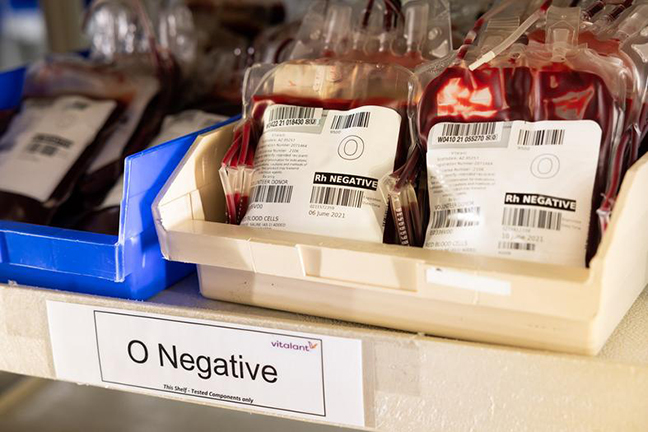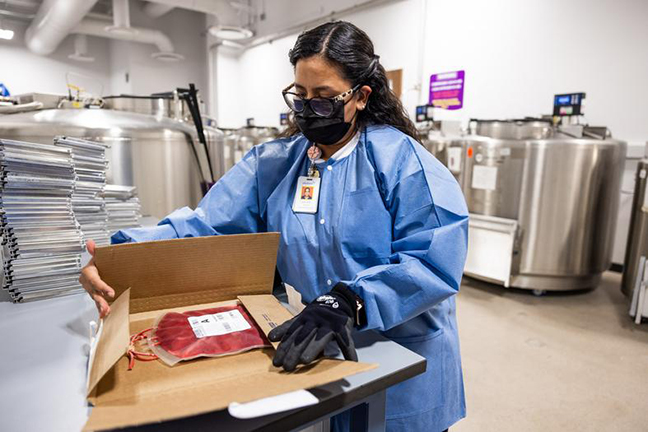Whole blood, the most common form of donated blood, is blood in its original state with none of its components separated or removed. Whole blood can help patients either by being transfused directly into a single patient, typically when the patient has had significant blood loss, or more commonly it can be separated into four specific components: red cells, white blood cells, plasma and platelets.
After receiving whole blood, the lab separates the whole blood into the four components to deliver what patients need more specifically. These components can be given to different types of patients, which is why a donation of one unit or pint of whole blood can help multiple people. Although white blood cells are sometimes used in medicine, they are not derived from a whole blood donation.
Whole blood and each of its four components are valuable resources for treating patients with different injuries and conditions.


Uses for Whole Blood
Whole blood transfusion may be used in an emergency trauma situation or a treatment that requires delivering multiple blood components simultaneously. For example, whole blood may be used in a life-threatening hemorrhage where oxygen-carrying capacity, coagulation factors, platelets and volume expansion are needed. Whole blood contains approximately 150 mL of plasma, which provides the patient with volume expansion and non-labile clotting factors.
Preparation and Storage
Whole blood is prepared when 400-550 mL of blood is collected into an FDA-approved container with the appropriate volume of anticoagulant solution. The primary red-cell-containing transfusion component is RBCs. This RBC component is prepared by centrifugation or sedimentation of whole blood to remove much of the plasma. RBC components can also be prepared by automated apheresis methods, which are continuous collection systems that remove blood from a donor, collect RBCs and return the remaining blood and plasma to the donor.
Whole blood contains platelets which, when stored up to 14 days, may contribute to hemostasis. The transfusing facility must have policies and procedures in place addressing specific indications for use, product specifications, administration instructions and volumes that may be transfused prior to considering whole blood an alternative to component therapy. Whole blood transfusions must be ABO identical unless there are procedures in place to address titer cut-off for anti-A and anti-B, specific indications for use and a defined maximum number of units to be transfused per patient.
For more information about our products, for example the AABB Technical Manual and the Circular of Information for Blood and Blood Components visit the AABB website.




